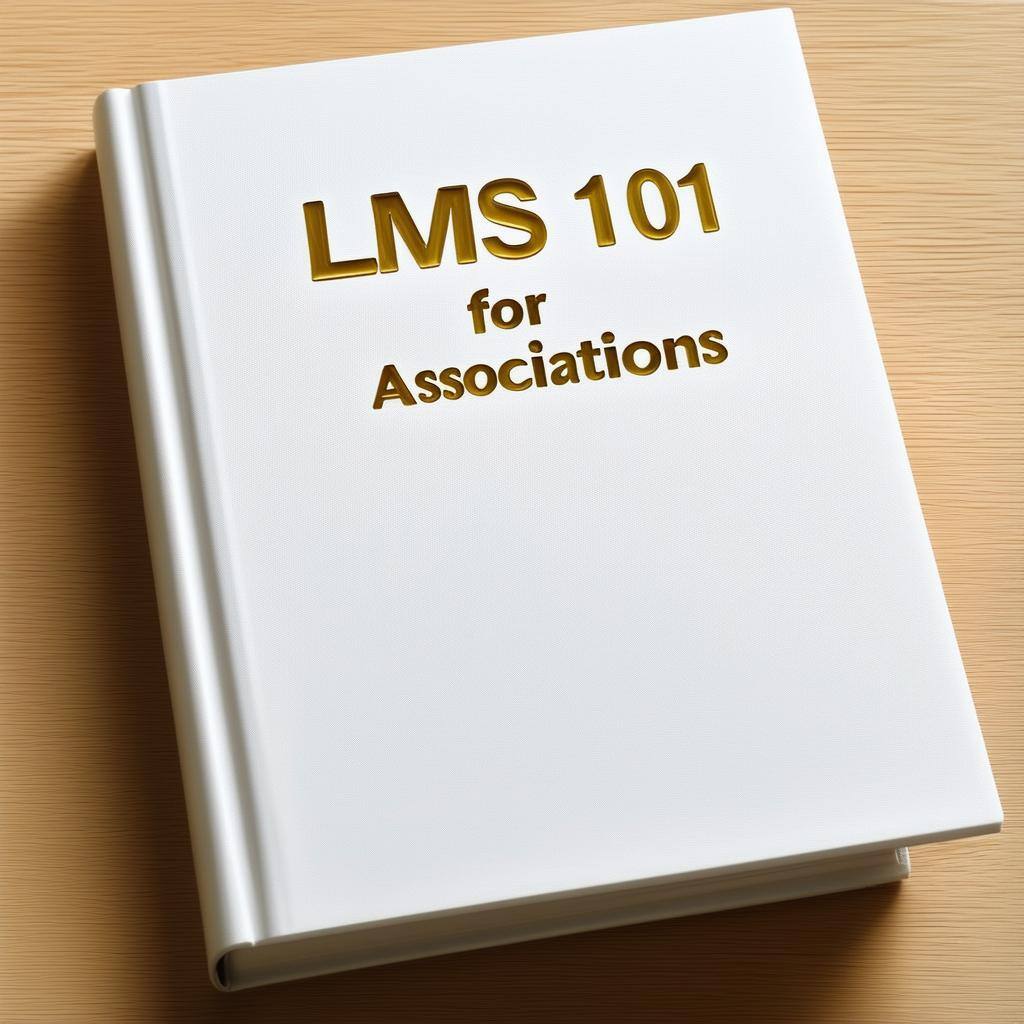How LMS Boost Efficiency, Cost Savings and Consistency for Associations
In an era where associations face mounting pressure to deliver high-quality education while managing tight budgets, Learning Management Systems (LMS)...

In today's digital age, associations are increasingly turning to Learning Management Systems (LMS) to deliver valuable educational content and training to their members. An LMS is a powerful tool that can revolutionize how associations manage, deliver, and track learning initiatives.
This guide will walk you through the essentials of LMS for associations, helping you understand its importance, key features to consider, and how to choose the right system for your organization.
An association Learning Management System is a software solution that provides the framework for housing and managing all elements of an association's educational program. Unlike LMS platforms used in corporate or academic settings, association LMS are specifically designed to cater to the unique needs of membership organizations.
There are hundreds of LMS to choose from, however very few focus on associations. An association-focused LMS like Intuto, will better understand the unique challenges associations face, and should have many associations customers from which to draw best practice.
Your LMS provider shouldn't just provide you with the software, they should be able to provide advice and insight into implementation.
Content Management: An LMS allows associations to create, store, and organize educational content in various formats, including PDFs, videos, slides, and interactive modules.
Course Delivery: Members can access courses and training materials through a centralized platform, often with the flexibility to learn at their own pace.
Progress Tracking: The system tracks learners' progress, allowing both administrators and members to monitor advancement through courses.
Certification Management: Many association LMS platforms offer tools to manage complex continuing education credits, CPD points and certification programs.
Reporting and Analytics: Robust reporting features provide insights into member engagement, course completion rates, and other valuable metrics.
When evaluating LMS options for your association, consider the following features:
A clean and intuitive layout is essential for both administrators and learners. An easy-to-navigate platform encourages member engagement and reduces the learning curve for your staff. Make sure to not only get a demo of the platform but get some hands-on time yourself.
Think of some of the common tasks you may need to perform and try to accomplish them yourself. If in doubt, ask the vendor to provide you with a list of common procedures that similar associations perform.
In our increasingly mobile world, a flexible LMS should provide seamless learning across devices. While mobile apps are useful for offline access, development of these can increase costs - and there can be limits to functionality.
Mobile-responsive web-based apps often deliver a more scalable, feature-rich, and cost-efficient solution.
Look for an LMS that allows you to customize the platform with your association's branding, creating a seamless experience for your members. A clean, well laid out interface that let's you navigate with ease and allows your educational content to shine is preferable to excessive use of brand colours, flashing gifs or attention-grabbing fonts. Readability, navigability, and accessibility should be the top priority.
Your LMS should integrate smoothly with other systems your association uses, such as your Association Management Software (AMS), Customer Relationship Management (CRM) tools, and webinar platforms. Not all software or integrations are created equally - so be sure to check the following for all software partners:
Some of these items are quite technical and may be beyond the average knowledge of some associations. If so, it still pays to check with vendors on each item, and if in doubt ask a 3rd-party integration expert to provide you with advice.
For associations selling courses or certifications, built-in e-commerce features are crucial for generating non-dues revenue. This may mean integration with your AMS if it has such functionality, or integration with common industry solutions like Shopify or PayPal.
Ensure your LMS supports common eLearning content standards like SCORM. This compatibility allows for easier content migration and future-proofs your investment.
Adopting an LMS can bring numerous advantages to your association:
Streamlines education delivery by bringing all your educational content into one place, making it easier to create, manage, and update materials.
Enhance member value by providing on-demand access to high-quality educational resources, increasing the value of membership.
Improve member engagement with interactive tools and self-paced learning options, helping members stay actively involved in your educational programs.
Efficient certification management with automated continuing-education tracking, helping you to manage certifications more accurately and with less effort.
Data-driven decision making will allow you to leverage analytics to better understand member needs, measure performance, and enhance the effectiveness of your educational offerings.
Cost-effective learning solution that cuts in-person training costs, increases accessibility, and provides members with flexible online learning opportunities.
Selecting an LMS is a crucial decision that can significantly impact your association's educational initiatives. Here are some steps to guide your selection process.
Begin by clearly defining your association' goals for implementing an LMS. Consider factors such as:
Based on your identified needs, prioritize the features that are most important for your association. Some critical areas to consider include:
Choose an LMS that can grow with your association. Look for features like the ability to create multiple learning portals to manage different Chapters and group management for different types of members, non-members and other stakeholders.
A positive user experience is crucial for both your staff and members. Look for an LMS with an intuitive interface and customizable branding options.
Ensure the LMS can integrate seamlessly with your existing tech stack, particularly your AMS. Key integration points include single sign-on, data synchronization, and e-commerce functionality.
Consider the level of support and training offered by the LMS provider. Robust technical support and comprehensive training resources can significantly smooth the implementation process. Some vendors also provide content development services and consultancy that you can use to fast track content development and provide much needed additional resource.
Once you've selected an LMS, follow these best practices for a successful implementation:
Implementing an LMS can transform how your association delivers educational content and manages member learning. By understanding the key features, benefits, and selection criteria, you can choose an LMS that not only meets your current needs but also supports your association's future growth and educational goals. Remember, the right LMS is an investment in your members' professional development and your association's long-term success.
As you embark on your LMS journey, keep in mind that technology in this field is continually evolving. Stay informed about emerging trends, such as AI-powered learning recommendations or advanced analytics, to ensure your association remains at the forefront of educational innovation.
Consult on vendors who can provide you consultancy and advice, not just a sales pitch. At Intuto we pride ourselves on our our openness and industry knowledge. Meet with us to chat about your goals and vision, we'd be delighted to share our industry experience.

In an era where associations face mounting pressure to deliver high-quality education while managing tight budgets, Learning Management Systems (LMS)...

In an era where data drives decision-making, professional and trade associations are uniquely positioned to harness Learning Management System (LMS)...

In an increasingly crowded market for professional development, associations face a critical challenge: differentiate or become obsolete. As...